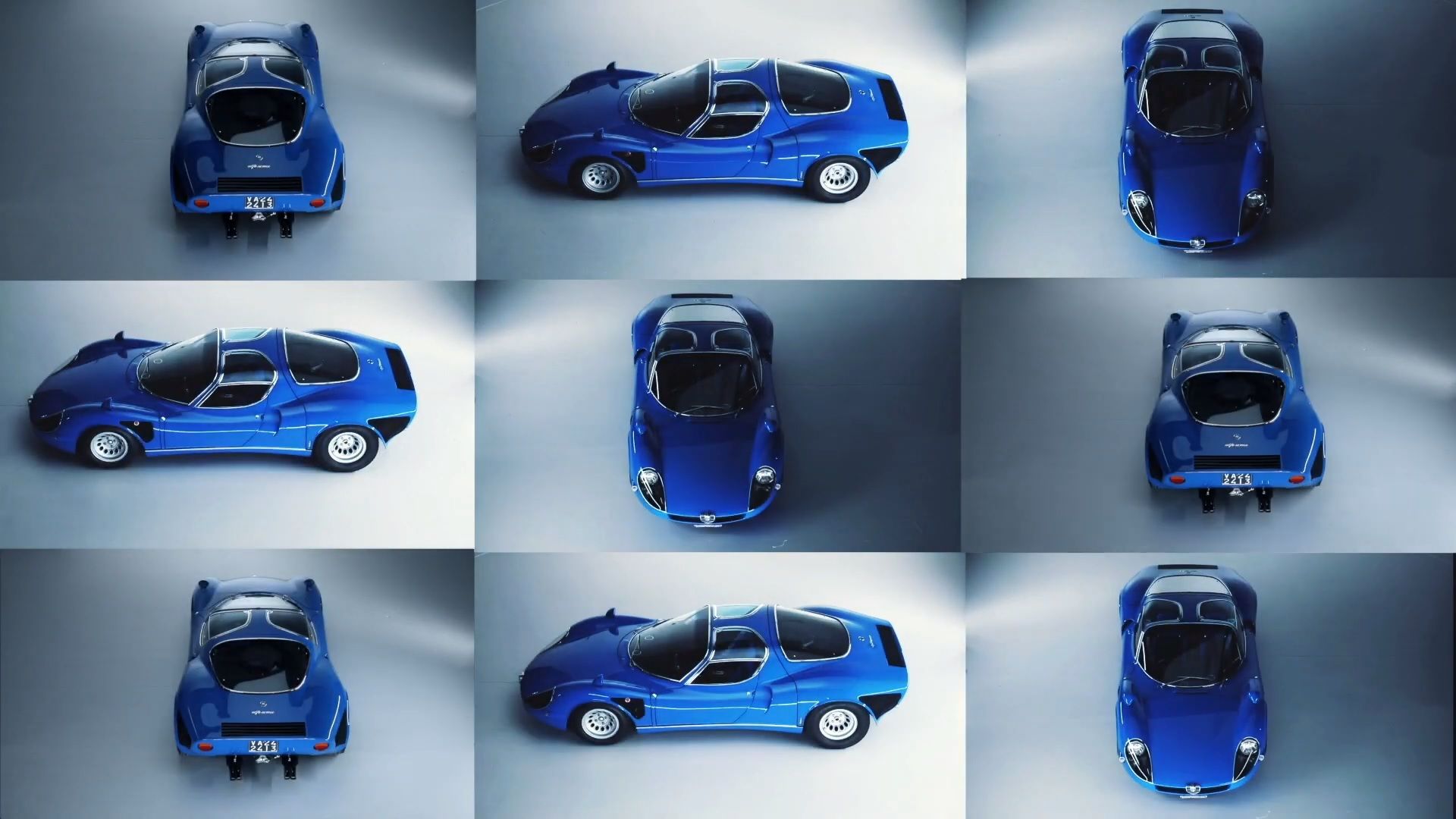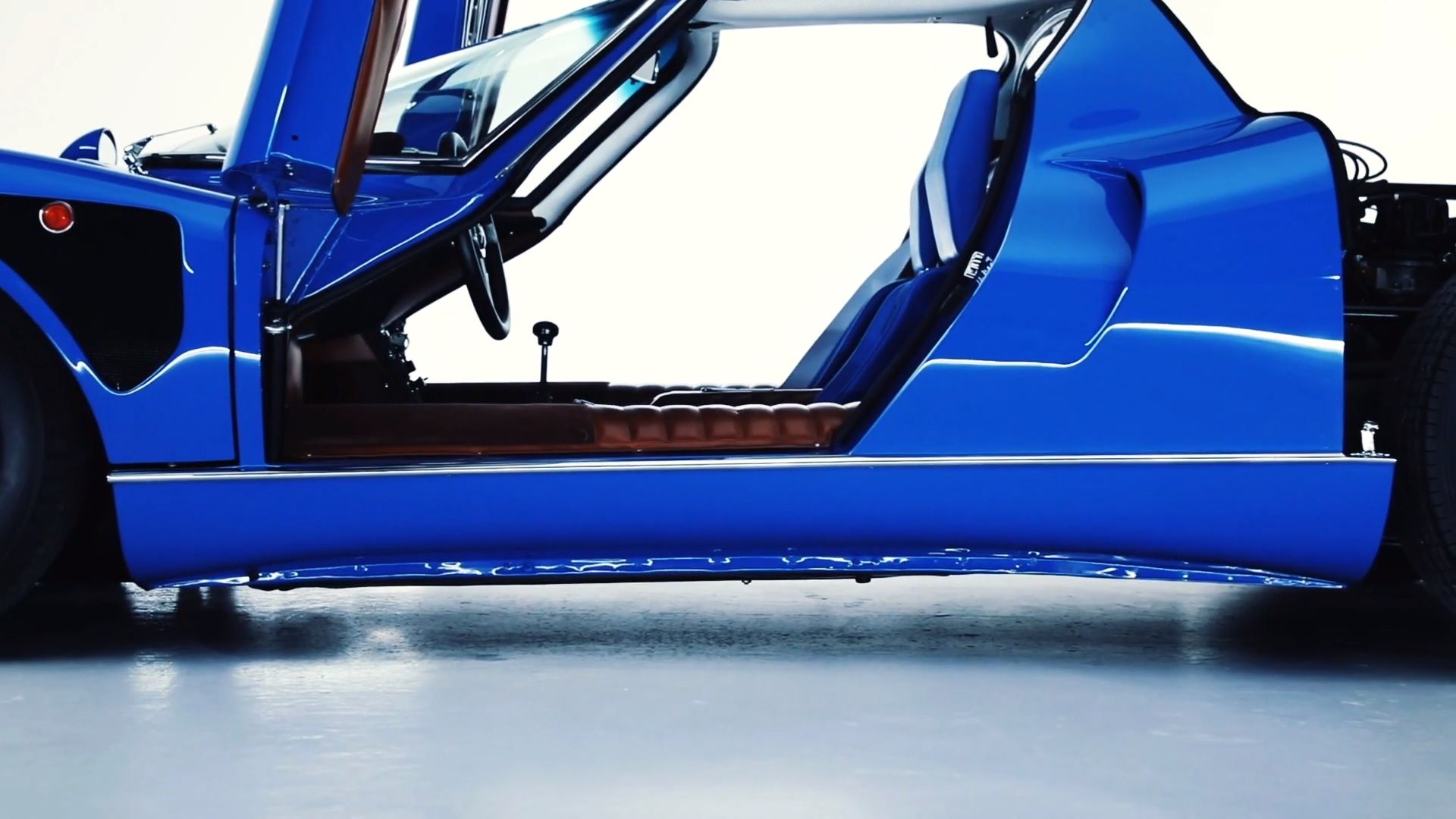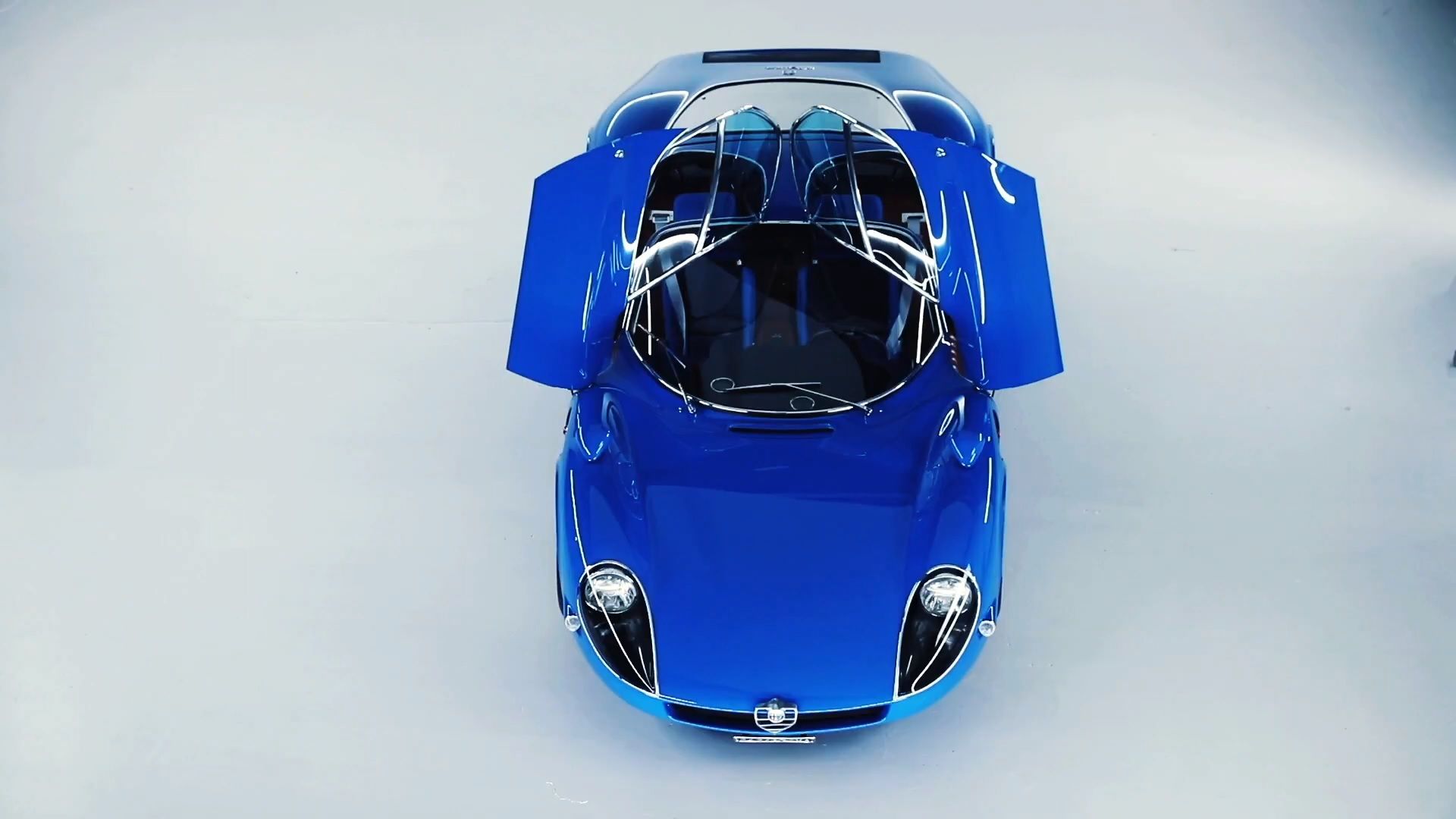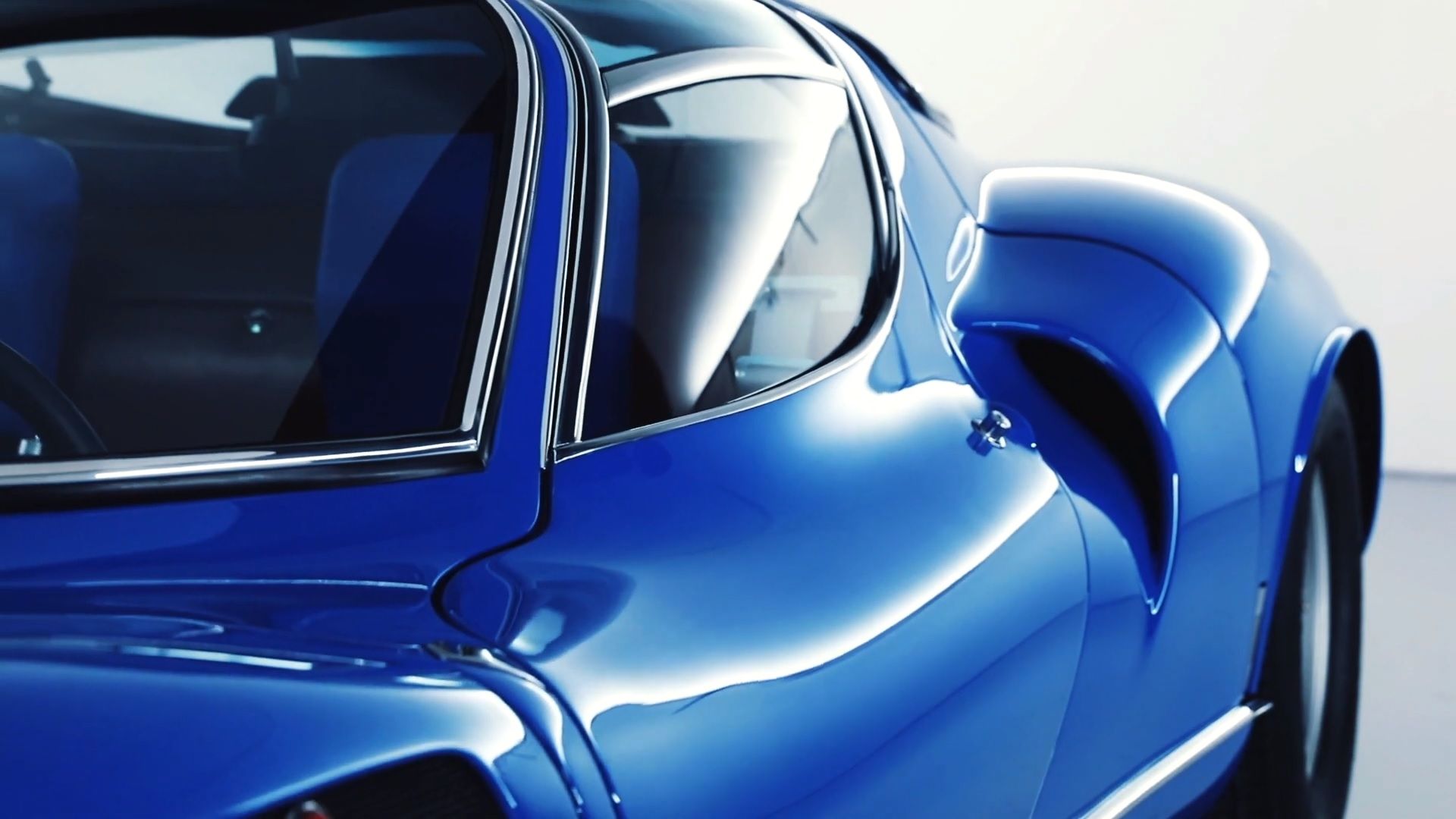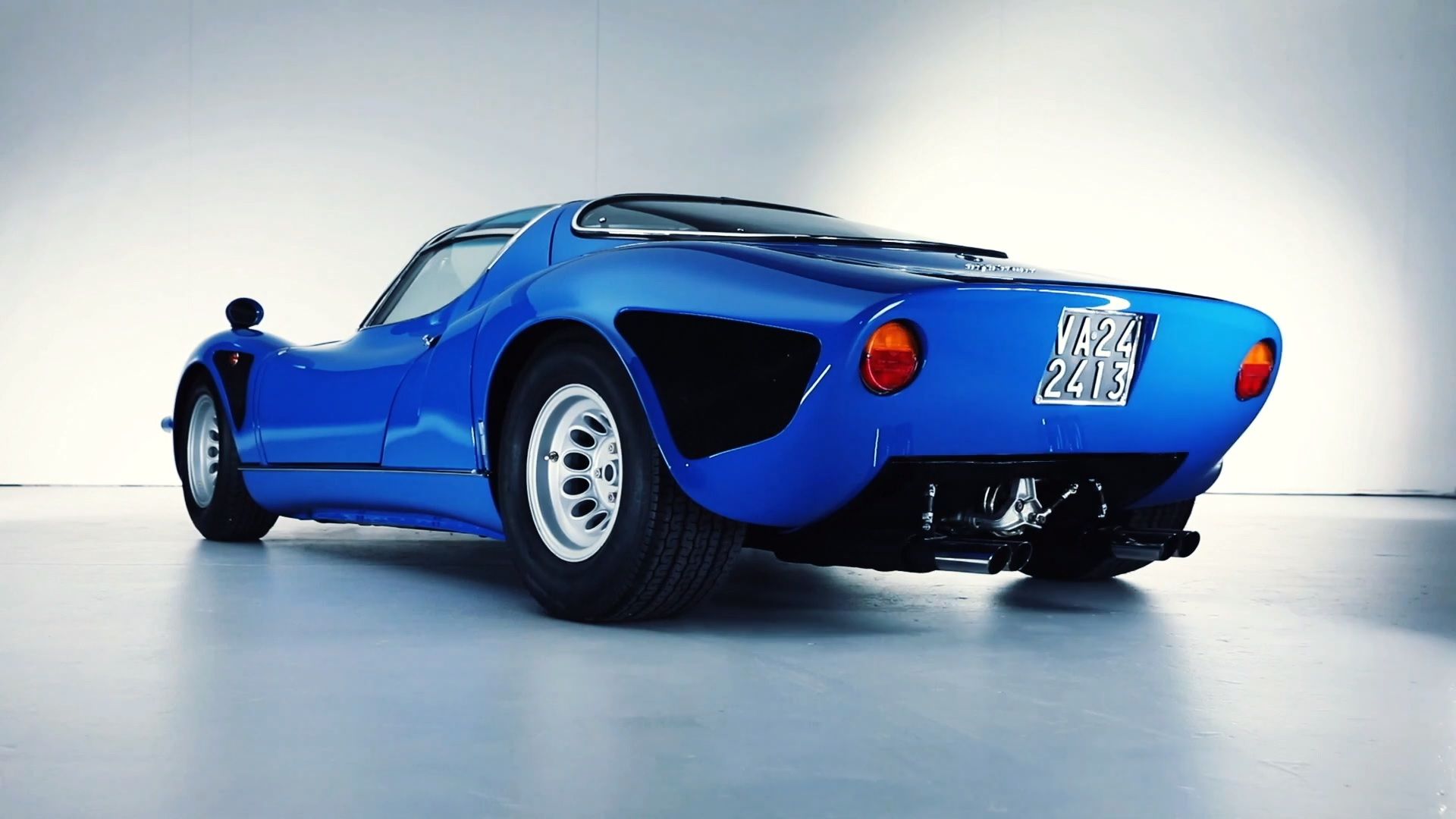Trying to pin down the most beautiful road car ever made is an impossible task. There are those that would give an arm and a leg to at least lay eyes on a 250 GTO and others that have altars in their homes dedicated to the Jaguar E-Type or the Lamborghini Miura.
However, among the cars tossed around in this discussion none is probably more exclusive than Alfa Romeo's Tipo 33 Stradale. While Ferrari built over 30 250 GTOs in the mid-'60s, fewer than 10 Tipo 33s are believed to exist so to come to the realization that one of them is blue, not red, is akin to realizing that the Sun revolves around the Earth and not the other way around.
Pretty in blue
Alfa Romeo, the legendary Milanese automaker that's currently churning out the Stelvio SUV and the Giulia sedan, celebrates its 110th anniversary this year. While somewhat farther away from its sporting roots than it once was, announcing last year the discontinuation of the 4C, its only sports car, Alfa Romeo is known as a maker of some of the world's finest race cars, from the Tipo B Monoposto to the 159 Alfetta, the 155 touring car, and the Tipo 33 TT12 prototype.
The latter began life as the Tipo 33 'Periscopio' all the way back in 1967 as Alfa Romeo was looking to get a piece of the action in the World Sportscar Championship's 2.0-liter prototype division. The Italian company had previously campaigned, through its competition arm known as Autodelta, the Tubolare Zagato models which, while shaped like ordinary grand tourers, most often raced in the prototype ranks due to the ultra-low production numbers.
In spite of their tubular chassis, the TZ1 and TZ2 models were outclassed by Porsche's mid-engined 904 and then by the 906 (Carrera 6) that replaced it in 1966. As Porsche was developing more and more bespoke race cars, Alfa Romeo realized it had to do the same if it wanted to stay competitive and Carlo Chiti's Autodelta was tasked with building a prototype sportscar.
However, the car was largely unsorted and mechanical gremlins would hinder the team throughout that first season although success was finally achieved in later years with the Group 6-spec T33s. But the road-going Tipo 33 Stradale arrived way sooner, Franco Scaglione working on the design of the car just as Autodelta was completing the two 'Periscopio' prototypes meant for Sebring.
Alfa didn't need to build the Stradale to homologate its race-going Tipo 33 as the car was running in the prototype division and, anyway, back then even the prototypes had to be road-worthy and be registered somewhere in the world as various hill climbs as well as the fabled Targa Florio were all in the championship. So, despite there not being a pressing necessity for the Stradale, Alfa Romeo built it anyway.
The first two prototypes featured quad headlights - later changed due to regulations regarding the distance between the ground and the lowest-mounted light cluster on a car - and magnesium bodies. In all, Carrozzeria Marazzi, which carried out the final assembly of the production Tipo 33 Stradales, claims to have made 18 chassis between 1967 and 1969 but only eight of them have been confirmed to have left the factory with the Scaglione body. Five other chassis were dispatched to some of Italy's most prestigious designers who tried their hand at giving the tubular frame some fancy clothes. Bertone, Pininfarina, and Giugiaro all made Tipo 33-based design studies, the most famous of which must be the Marcello Gandini-penned Carabo that was unveiled in 1968.
The Carabo itself is considered to be one of the most emblematic concept cars of all time, often said to be the design to influence all supercars that came after it, especially those built throughout the '80s and '90s. But the Tipo 33 Stradale is a different kind of beautiful. With curvaceous lines, it is 10 centimeters (3.9 inches) shorter than the already tiny short-tail 'Periscopio' and, unlike the race car, features a glass canopy that wraps around the cockpit.
The car you're seeing here is an oddity. All of the other Tipo 33s were painted red but Count Corrado Agusta, brother of MV Agusta founder Count Domenico Agusta and himself a successful airplane and helicopter building, following in the footsteps of his father Count Giovanni Agusta who established Agusta as an airplane maker before WW2.
Agusta's wealth allowed him to purchase a Tipo 33 which cost about 9,750,000 Italian Lire at the time (or about $115,000 today).
Agusta didn't keep the unique Alfa for too long and it even ended up in a museum at one point before vanishing from the public eye after being purchased by a secretive Japanese collector who wanted the blue paint to go away in favor of the usual Alfa Romeo red. Many years later, Egon Zweimueller orchestrated the car’s sale to a prominent Swiss collector and subsequently oversaw a world-class 5,000-hour restoration back to its original specification - including the blue paint job.
The car was supposed to make its public debut at this year's Pebble Beach Concours d'Elegance but, unfortunately, the Concours was canceled due to the ongoing pandemic which means we'll have to wait for a wee while before we get to feast our eyes with more images (and some moving pictures as well) of this drop-dead gorgeous Tipo 33. Having said that, we're just glad it's out in the open again especially now when Alfa is celebrating its 110th anniversary!

